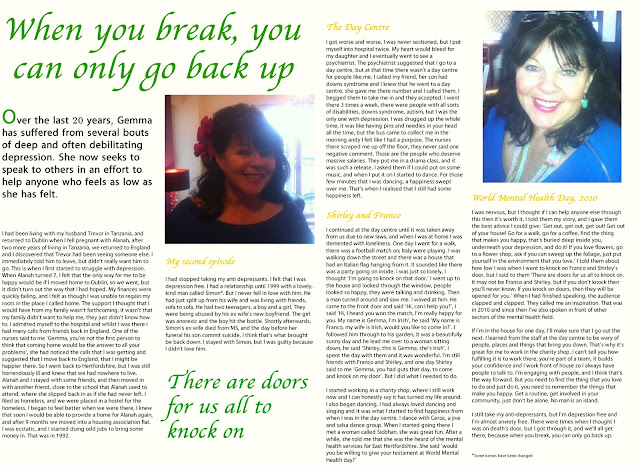For my dissertation I propose to create a series of articles on the subject of food. I have chosen to produce a series of articles as opposed to making a documentary because it means that I can focus on many different aspects of the subject.
Because I've chosen such a wide subject area, I think that my audience will be varied. Some pieces that I will be producing will be serious accounts of the food crisis that we have in the world at the moment, where as other articles will be more light-hearted, so I feel that my articles will interest a wide variety of people.
I propose to submit a mixture of styles of articles, including a Gonzo piece, I would like to do a gonzo piece on how much food a person in a developing country eats in a week. I would first go to see a doctor to find out more about malnutrition and if and how I would be affected, which I would include in my article. Then I would spend a week living on the diet of a person from a developing country, and remark on how much energy I had, how it compared to my own diet, and whether or not my weight would fluctuate during the week. I would also try to incorporate the same type of exercise that someone from a developing country would carry out during the day, such as an amount of walking. I think that this would be a difficult task but would also be enlightening to readers and to myself about how fortunate we are in the Western world.
In comparison to this piece on food in developing countries, I would like to research how much food is wasted every year is the Western world. According to statistics it is estimated that we each waste 120kg of food each year. I would like to find out just how much this is, such as explaining that that's around 286 chocolate bars per person. I would also like to research where this good goes, I know that food is often turned into landfill waste, and there are several campaigns to feed people as opposed to sending food to landfills.
Another topic I would like to write an article on would be extreme diets. I would look at both over eaters and under eaters, and find out what each of them were to eat in a day. In this case, I would either produce two confessional interviews of how a persons life is affected by an extreme diet and compare their diets to that of a healthy individual, or I would use them together and compare the differences in their diets.
One piece that I would like to do is one that we as the features team discussed earlier in the year, although it was never produced. I would like to eat fatty foods, and then explain how much time exercising it would take to burn off the foods that I had eaten. For this I would like to rely heavily on pictures. I think that this piece could be humorous, however informative at the same time.
Another topic that would be interesting to look at would be how food influences the media. I would be interested in looking at advertising for food, such as fast food, and how they adapt their meals to look different for an advertisement. There are also a series of programmes that would be interesting to write about, such as judging other people on their cooking abilities in Come Dine With Me and portion sizes and eating challenges in Man Vs. Food. It would also be interesting to look at the film Supersize Me, although the film was made some time ago and I therefore run the risk of not being current.
I would either like to do a confessional interview, or a 'day in the life of', a competitive eater. I think it would be interesting to find out what a competitive eater eats in every day life, how they train for a competition and the kid of things that they may have to eat.
These are just some of the ideas that I have thought of, and I feel that under the heading of 'Food', there are so many possibilities or articles I will be able to produce. I would like to focus quite heavily on pictures, because I am aware from the other magazine articles that I produced that too many words in a spread looks difficult to read. I am happier with the magazine spread that I produced that had more pictures, because the ratio of pictures to writing was just right, in my opinion. I would try to make all of my spreads look different, so instead of all my spreads being able to go into one magazine under the title of 'Food', they would be able to go into several different magazines.
I am happy I have chosen this idea because I am looking forward to how many opportunities I have to create different spreads and think of different ideas.

